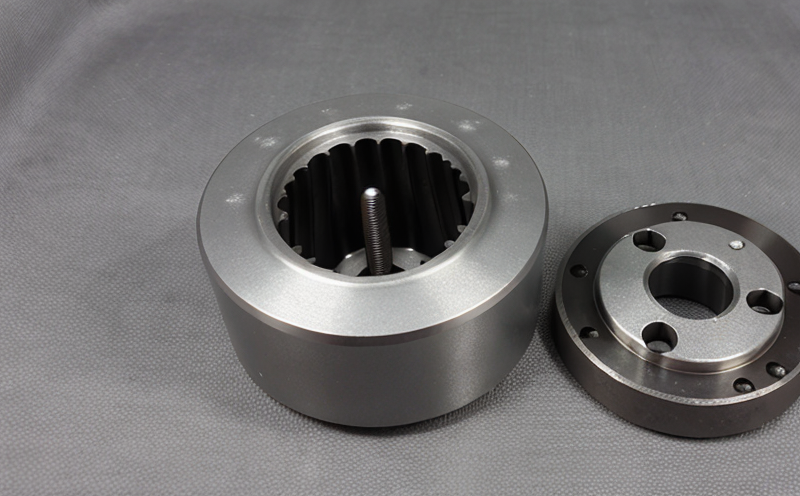ASTM E562 Quantitative Metallography of AM Materials
ASTM E562 Quantitative Metallography is a critical analytical technique used to evaluate the microstructure and morphology of materials, particularly in advanced manufacturing processes such as powder metallurgy (PM) and additive manufacturing (AM). This service focuses on quantitatively assessing the microstructural features of AM materials using this standard method. The process involves meticulous sample preparation, observation under high-resolution microscopy, and precise measurement techniques to characterize grain size, phase distribution, porosity, and other critical properties.
The significance of quantitative metallography in PM and AM lies in its ability to provide detailed insights into the microstructure-property relationships. This knowledge is essential for optimizing material performance, ensuring compliance with regulatory standards, and enhancing product quality. By leveraging ASTM E562, labs can offer a robust framework for understanding how process parameters influence microstructural development.
Sample preparation is a crucial step in this testing procedure. Specimens must be carefully ground, polished, etched if necessary, and mounted on slides to ensure accurate and reproducible results. The use of appropriate etchants like nital (aqueous solution of nitric acid and ethanol) helps reveal grain boundaries clearly during the examination process.
When examining microstructures using light microscopy or scanning electron microscopy (SEM), it is important to note that these tools provide valuable information about crystallographic orientation, morphology, and distribution within the material. For instance, in AM processes where powders are fused together layer by layer, understanding how this process affects grain growth can have significant implications for part performance.
Once samples have been prepared correctly and imaged under a microscope, quantitative evaluations follow using ASTM E562 guidelines. This includes measuring average grain size (D), standard deviation of grain sizes (σ), volume fraction of different phases, inter-granular boundaries, and other relevant metrics depending on the specific requirements outlined by the client or regulatory body.
The importance of this service cannot be overstated for industries reliant upon advanced manufacturing technologies. It allows companies to make informed decisions regarding process optimization, defect reduction, and improved product reliability. Understanding the microstructural characteristics at various stages of production enables manufacturers to identify potential issues early on and implement corrective actions before costly failures occur.
For quality managers looking to ensure consistent material performance across batches or locations; compliance officers seeking evidence that meets regulatory requirements; R&D engineers aiming to refine their processes further; and procurement teams needing assurance about supplier capabilities, ASTM E562 quantification offers unparalleled value. By providing detailed quantitative data on microstructural features, this service helps stakeholders make well-informed choices based on scientific evidence rather than guesswork or anecdotal information.
It is worth noting that while ASTM E562 provides a standardized approach to quantitative metallography, the specific parameters and techniques employed may vary slightly depending on the type of AM material being analyzed. For example, nickel-based superalloys used in aerospace applications might require different etching procedures compared to cobalt-chromium alloys utilized in medical devices.
In summary, ASTM E562 quantitative metallography serves as an indispensable tool for evaluating and optimizing the microstructure of AM materials. Through precise measurement techniques, this service ensures that manufacturers can produce reliable parts with consistent quality while meeting both internal and external standards.
Why It Matters
- Enhanced Material Performance: Understanding the microstructure helps optimize processes to achieve desired mechanical properties.
- Regulatory Compliance: Many industries are subject to strict quality control measures; quantitative data supports adherence to these standards.
- R&D Innovation: Quantitative analysis facilitates continuous improvement in material development and manufacturing techniques.
- Quality Assurance: Consistent results across batches or locations ensure that products meet specified quality criteria.
Applied Standards
The primary standard applied in this service is ASTM E562, which provides a comprehensive framework for quantitatively assessing microstructures. Additionally, other relevant international standards such as ISO 10397 and EN 1484 may also be referenced based on the specific requirements of the client or industry regulations.
These standards ensure that all measurements are conducted consistently across different laboratories worldwide, leading to more reliable data interpretation. Compliance with these globally recognized guidelines is crucial for maintaining high levels of trust among stakeholders and ensuring interoperability between various testing facilities.
Why Choose This Test
- Precise Measurement: Quantitative data provides accurate insights into the microstructure, enabling informed decision-making.
- Process Optimization: Understanding how process parameters affect grain growth and phase distribution allows for fine-tuning of manufacturing processes.
- Compliance Assurance: Providing detailed quantitative reports ensures that clients can meet regulatory requirements confidently.
- Innovation Support: The ability to measure microstructural changes at various stages of production supports ongoing research and development efforts.





